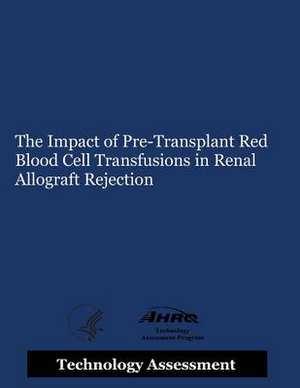The Impact of Pre-Transplant Red Blood Cell Transfusions in Renal Allograft Rejection
Autor Agency for Healthcare Resea And Quality, U. S. Department of Heal Human Servicesen Limba Engleză Paperback
Preț: 140.72 lei
Preț vechi: 148.12 lei
-5% Nou
Puncte Express: 211
Preț estimativ în valută:
26.94€ • 29.27$ • 22.64£
26.94€ • 29.27$ • 22.64£
Carte disponibilă
Livrare economică 31 martie-14 aprilie
Preluare comenzi: 021 569.72.76
Specificații
ISBN-13: 9781503222366
ISBN-10: 1503222365
Pagini: 162
Dimensiuni: 216 x 279 x 9 mm
Greutate: 0.39 kg
Editura: CREATESPACE
ISBN-10: 1503222365
Pagini: 162
Dimensiuni: 216 x 279 x 9 mm
Greutate: 0.39 kg
Editura: CREATESPACE
